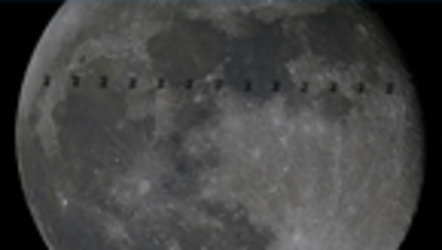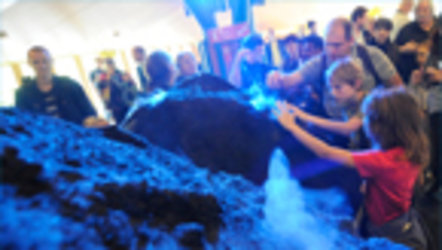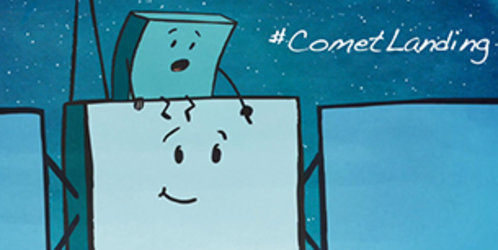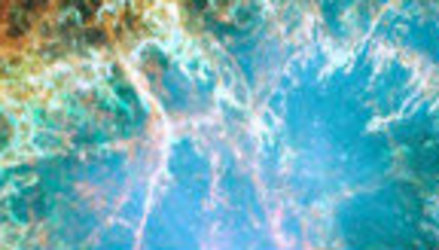Training teachers for space
School children find space fascinating. Yet many teachers consider it difficult to introduce space into their lessons. ESA’s ESERO offices, which currently cover eight ESA Member States, address this problem directly with a range of teacher training programmes for primary and secondary schools.
Each ESERO is currently preparing its teacher training programmes for 2013. Some of these are repeats of previous years; others are newly developed to reflect needs and gaps.
Teacher training is essential when supporting better education. New skills and teaching methods can be learned, helping teachers to grow in confidence. The European Space Education Resource Offices (ESERO) across Europe are ESA’s primary way of training teachers.
‘Some teachers think space is too difficult to teach,’ says Hans Tuinenburg, manager of ESERO Netherlands, ‘We show them that it is fascinating.’ Using space to provide real-life examples involving mathematics, physics and chemistry can help teachers to keep students engaged and motivated in these subjects.
Each ESERO offers courses tailored to the specific requirements of the country’s teachers and STEM (Science, Technology, Engineering and Mathematics) curricula. These are usually done in collaboration with national partners already active in STEM education.
Teacher training sessions make use of existing ESA/ESERO educational materials and, if appropriate, develop specific resources designed to cover the needs of their national education community.
ESERO Netherlands runs two teacher conferences a year, one aimed at primary teachers, the other at secondary. Each year a theme is chosen. Last year, for the primary teachers, it was ‘Beyond the Solar System’ and concentrated on sizes and distances.
For the secondary teachers, the theme was expanded to talk about measuring things that you cannot reach, exactly as happens in space. Each conference attracts about 100 teachers.

In Belgium, the country is split into three different communities so the ESERO must cater for each. For Flemish speakers, workshops have proved popular. For the French speaking community, more formal in-school training has been the best approach. ‘Last academic year we reached 436 teachers, this year already we have reached 300,’ says Denis Cornet, manager of ESERO Belgium.
In Ireland, the ESERO offers a course for primary school teachers called Maths! It is rocket science. ‘We show how space can be used as a theme to teach maths in a cross-curriculum way,’ says Stephanie O’Neill, manager of ESERO Ireland.
Developed with astronomers at the Armagh Planetarium and the Black Rock Castle Observatory, Co. Cork, the course lasts for 5 days and is run simultaneously on three sites during the first week of the summer holidays. Endorsed by the Department of Education and Skills, it counts towards continual professional development.
A key goal for some ESEROs is to show that space can be used to teach more than just science, technology, engineering and mathematics. For example, stories set in space can be used to increase literacy in reluctant readers who are nevertheless drawn to science.

On 12–13 February 2013, the UK ESERO ran a primary school teachers course entitled "Space and Astronomy in the Primary Curriculum". Fourteen teachers participated in the training course, which illustrated how space can be used as a context across the curriculum.
‘It is refreshing to give the teachers the confidence to use space as a means of teaching,’ says Allan Clements, manager of the UK ESERO. This allows them to better meet the curriculum's goal of making children aware how to work scientifically: to sift evidence and look for proof, and not just in the sciences.
The Nordic ESERO staff share this goal. They run an array of university-credited teacher training courses across Norway, including on Svalbard at the Andøya Rocket Range, and in the other Nordic countries. ‘We try to give the teachers an understanding of what physics really is. It is a way to guide thinking, not a list of dogmatic facts,’ says Birgit Strømsholm, manager of Nordic ESERO.
Nordic ESERO is currently choosing the teachers to attend its Climate Research in the Polar Landscape training course. Seventy four teachers, including 28 from Sweden, have applied for just 25 places. Also in the final stages of preparation is an informal two day space physics workshop to discuss CanSats. It is to take place in collaboration with upper secondary school teachers in Silkeborg, Denmark on 13-14 March. There are plenty of other courses on offer.

Currently, Nordic ESERO is accepting registration for a number of courses to run during August. Below the Polar Skies is for secondary school teachers and concerns the northern lights and Earth’s response to solar activity. Space and Classroom will run at Andøya and repeat in Copenhagen. It is at primary and lower secondary level, and will introduce teachers to the fundamentals of planetary science and the resources available for classroom use. Details and registration details can be found on the website. http://www.narom.no/artikkel.php?aid=2&bid=160&oid=1088
The ESERO training courses reach hundreds of teachers every year in each country. Through them, they reach thousands of school children. Most 2013 teacher training courses will take place in the second half of the year. Registrations are open or will be in the coming months. Information is available on each ESERO website - please see links on the right.
For further information, please contact: education @ esa.int.















 Germany
Germany
 Austria
Austria
 Belgium
Belgium
 Denmark
Denmark
 Spain
Spain
 Estonia
Estonia
 Finland
Finland
 France
France
 Greece
Greece
 Hungary
Hungary
 Ireland
Ireland
 Italy
Italy
 Luxembourg
Luxembourg
 Norway
Norway
 The Netherlands
The Netherlands
 Poland
Poland
 Portugal
Portugal
 Czechia
Czechia
 Romania
Romania
 United Kingdom
United Kingdom
 Slovenia
Slovenia
 Sweden
Sweden
 Switzerland
Switzerland

































